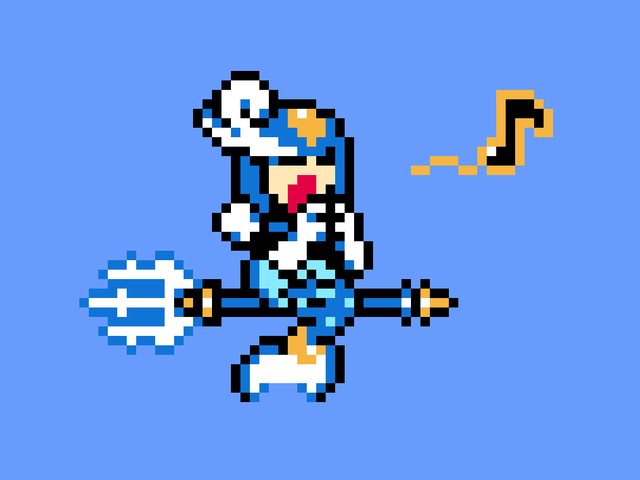
“This town ain’t big enough for all these princesses,” says Mario in his latest game, Wild Wild Mario World–and he’s totally righteous on that point, even as he twirls his six-shooter and splits off a couple varmints’ heads from their shoulders. (Said game may only exist in my dreams.) (Which means it’s totally a secret level in Super Mario Bros. 2.) (Ha ha ha nerd joke!)
What with Princesses Peach, Zelda, Daisy, Prin Prin, Marle, Rozalin, and, heck, Tomato, it’s a wonder there isn’t a Super Smash Bros. game devoted entirely to princesses and their frying pans/golf clubs/other appliances of mass destruction. (And if we’re talking about Xena, giant swords. She’s a warrior princess, y’know.) But there’s more to video game heroines than princesses who constantly need saving– or superpowered bounty hunters, for that matter. (Not that there’s anything wrong with that.) Here’s just a tiny selection of the girls who should mean the most.
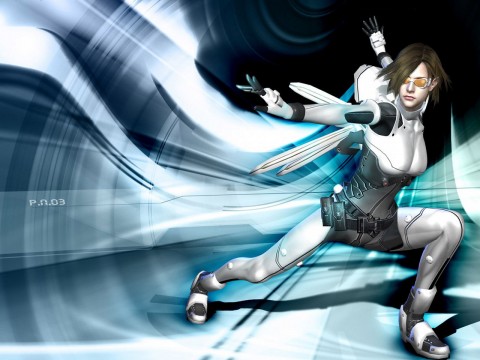
Vanessa Z. Schneider
I couldn’t tell you what P.N.03 was about, despite having played it through all of, well, once, but I can tell you one thing– if there’s one hero who can blast robots to kingdom come and look stellar doing it, it’s Vanessa Z. Schneider, otherwise known as Product Number Three. Like her much more popular cousin over at Nintendo (rhymes with Bamus Baran), Schneider’s equipped with a skintight bodysuit, called an Aegis Suit, with some pretty nifty abilities. However, unlike her cousin, she’s able to do more than simply crack an electric whip. Schneider spends much of her time in P.N.03 shooting palm blasts a la Iron Man, and spends even more time (should the player decide it) trying to unlock a bunch of other Aegis Suits so she can kick the crap out of robots even faster. When she really feels adventurous, Schneider can perform ultra-esque moves called Energy Drives, terrorizing all onscreen enemies the same way bombs do in Star Fox 64, or, for that matter, any other space shooter out there.
But what’s great about Ms. P.N.03, Esq., isn’t that she’s got vorpal palms or shiny suits. Her real skill lies in beating down all these robots and looking darn good while doing it. Apparently as part of her, well, production, Schneider developed fleet feet the way Yoshi developed a propensity to swallow anything that moves– that is, Schneider dances her way across corridors, flipping and dodging, literally making it look easy to shoot down ‘bots. It’s like watching a rather shiny ballerina, albeit one that shoots while chasséing. (Alternate simile: it’s like watching Drunken Master— you really wouldn’t think those moves would do any actual damage, but oh, do they hurt.)
The only detriment Schneider has to her credit is that she can’t seem to run and shoot at the same time– though Leon Kennedy and Bass have this problem, too. Perhaps she thinks that it’d ruin the whole aesthetic. One thing’s for sure, though: if the GameCube had a femme fatale, it was Vanessa K. Schneider.
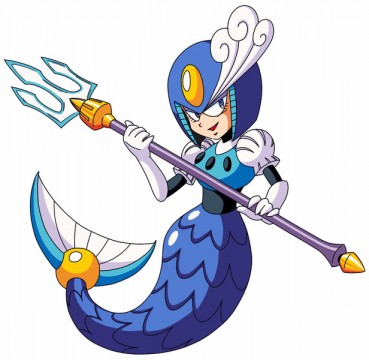
Splash Woman
Mega Man 9 is memorable for many reasons, not the least of which is a return to 8-bit-glory in a increasingly graphics-focused environment, but one of the most memorable reasons lies in the introduction of Splash Woman, the first and (so far) only female Robot Master in the classic Mega Man series. Originally designed as a maritime search-and-rescue unit, evoking images of Splash Woman as a figurehead, the mermaid-like Splash Woman unfortunately found herself in a sketchy position when she became scheduled for scrapping. Dr. Wily, of course, managed to lure her, as well as the rest of the delinquent Robot Masters, into being reprogrammed for nothing else than world domination. And it’s up to our favorite Blue Bomber to beat her down.
Unfortunately, this doesn’t make Splash Woman much of a heroine– but you have to admit she’s certainly worth remembering, even ignoring the fact that she’s the first Robot Master. Her little dungeon is probably one of the more annoying ones in Mega Man 9, with lots of bubbles and too many spikes (not to mention countless annoying octopi), and indeed her battle, albeit a little bit simple, is instantly recognizable with its reliance on Splash Woman’s siren-like vocal cords and fish-summoning abilities. (It’s also recognizable because she’s about the easiest Robot Master in Mega Man 9, taking two points of damage from the Mega Buster when most other Robot Masters take only one. On the bright side, Splash Woman’s Laser Trident attack conversely deals more damage to Mega Man than any other Robot Master in the game.)
Thanks to Capcom’s delight in trivia for each Mega Man character, exemplified in the CD directory in Mega Man and Bass, we know that Splash Woman, like Guts Man, enjoys karaoke (for more obvious reasons than the giant Guts Man). She also probably hates bees, since Hornet Man’s Hornet Chaser is her weakness. And for the fans, there’s plenty of speculation about Splash Woman being a robotic ancestor/inspiration for Mega Man Zero‘s Leviathan and Mega Man ZX’s Pandora. They’re all girls and they swim. That should be enough evidence, right? Probably not, but let’s just be glad Mega Man finally gets to fight someone other than robots overdosing on testosterone.
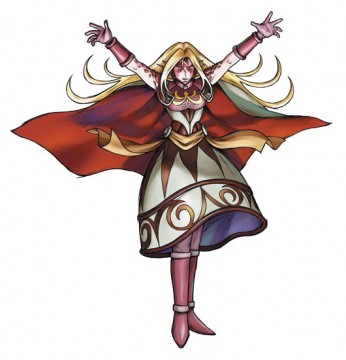
Menardi
Constantly looming over our 3DS-minded heads here at Nintendojo, Golden Sun: Dark Dawn‘s release can’t come soon enough– but until then, we’ll probably just settle for the Golden Sun games that we have. From the first Golden Sun, Menardi hails from the blizzard-prone snowscape of Prox, just south of the end of the world. When she first shows up with her partner Saturos, in the aftermath of a massive eruption-cum-earthquake in player hometown Sol Sanctum, Menardi is very quickly established as a rather unsightly villain, with blotchy pink skin and demonic ears. She knocks Isaac and Garret around, almost killing them with her fire-manipulating Mars Psynergy. Isaac and Garret, of course, are later recruited to stop Saturos and Menardi from lighting a couple of lighthouses, which by most accounts will bring about the apocalypse. Indeed, by the end of Golden Sun, it’s Saturos and Menardi who lie dead on top of Jupiter Lighthouse, slain by Isaac, Garret, Ivan and Mia; their stories, on the other hand, have yet to be revealed.
It’s in Golden Sun: The Lost Age that Menardi’s background is finally fleshed out, culminating in a complete about-face in terms of how players should perceive her. As Lost Age protagonists discover, Saturos and Menardi no more wanted to maim and kill than they wanted to bring about the apocalypse. Apparently, nobody paid much attention to exactly what the lighthouses did (hint: they save the world) back in Golden Sun, instead wanting to beat up Saturos and Menardi solely because they looked funny with their Technicolor skin tones. Characters thought dead in the first game are discovered safe and sound in The Lost Age as a result of Saturos’ and Menardi’s intervention, and indeed the characters in Prox, the hometown of the pair, wait anxiously for Saturos’ and Menardi’s return on account of how they were trying to save Prox from the ever-widening reach of the end of the world. (It’s complicated.)
Along with Saturos, Menardi’s probably one of the most tragic characters in the Golden Sun series, wanting to do some good in the world but not knowing just how to go about doing it. (They were also pretty bad at communicating to other people, i.e. Isaac & Co., why the suspicious things they were doing were actually vital to the world’s survival.)
As a side note, Menardi’s death also drives her sister, Karst, to unfathomable murderous intent in Golden Sun: The Lost Age. This is pretty much half of Karst’s identity, right here. They’re both also pretty good at those pesky one-hit-kill fire moves, which as any role-playing gamer knows, is a horrifically unlucky thing to ever experience.
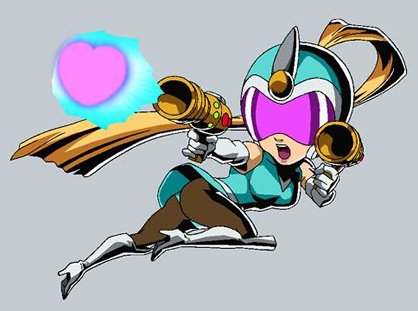
Silvia
In designing probably one of the most difficult games on the GameCube, Clover Studios made sure Viewtiful Joe was about more than just some overly masculine hero with a clingy girlfriend. Okay, yes, much of Viewtiful Joe indeed revolved around an overly masculine (albeit short) hero with a clingy girlfriend, but after you beat the game on Adult mode (which was pretty hard indeed), you at least got to play as that clingy girlfriend.
Sexy Silvia– because that’s the best name the developers could come up with to match Viewtiful Joe –is the long-lost daughter of super-ultra-powerful Power Ranger wannabe Captain Blue, and indeed follows in her dad’s footsteps in superherodom. As an unlockable character, though, and in the tradition of the punishing Viewtiful Joe series, Sexy Silvia has her fair share of handicaps. Her dodges are rather subtle compared to other characters, making it more difficult to time her escapes, and this is especially obvious when it comes to bosses that require considerable mastery of the dodge ability to defeat. (Hulk Davidson, I’m looking at you.) And unfortunately, Silvia takes twice as much damage as everybody else. (!) But meanwhile, Silvia’s got the uncanny ability to run so fast it’s almost like she’s teleporting, and jumps a bit higher than her boyfriend does– and most importantly, her VFX meter– you know, the one that gives her superpowers– drains much slower. She’s a hard-hitter for sure– she just can’t be hit as much.
Of course, not too many people got to play as Sexy Silvia back in Viewtiful Joe, on account of the game was too darn hard to beat on Adult mode and took weeks to finish (speak for yourself, Andrew); but in Viewtiful Joe 2 Sexy Silvia fought nigh side-by-side with Joe in a rather pointless attempt to show that she was just as great as her boyfriend. Pointless not in the sense that she wasn’t better, though, but rather because Viewtiful Joe emphasized the differences between Silvia and Joe in a non-competitive manner. Sure, Joe had cool things like Majin Six and those darn Voomerangs, but Silvia packed heat in the form of her twin Desperadoes– not to mention a Silvia-exclusive ability to repeat any prior action instantly with her Replay skill. (Silvia can’t use Mach Speed in Viewtiful Joe 2, probably because programmers didn’t want her to teleport all over the place as in the first game.)
What’s more, Silvia provided much-needed witty banter with Joe, and proved especially crucial in several points of the game, not the least of which include various puzzles only Silvia’s vastly more intelligent brain could provide. (Not that that’s saying much with Joe.) At the heart of it all, though, is Silvia’s undying ability to be somewhat annoying, yet horribly lovable and stylishly powerful at the same time. Perhaps that isn’t so heroic on paper, but it’s a phenomenon that needs to be seen to believed: she’s Viewtiful indeed.
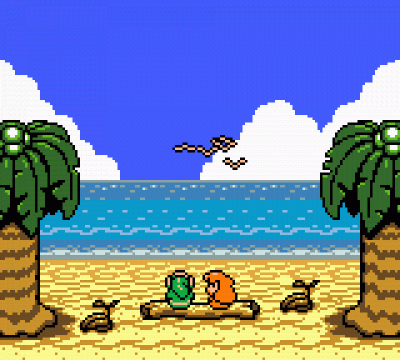
Marin
So she may not be a heroine, per se, and she may not be as obscure as some of our other friends here, but Marin of The Legend of Zelda: Link’s Awakening fame definitely doesn’t enjoy the same kind of praise other heroines do. She does, however, inspire a certain degree of cacophony. Here’s a girl, after all, who only showed up in a single Zelda game– which I understand is some kind of bragging point, but bear with me here– and yet has managed to provoke a huge explosion of fan interest.
Sound odd? It’s probably due to the efforts of a little-known figure named Yoshiaki Koizumi, then a mere twenty-six-year-old illustrator, who decided he wanted Link’s Awakening to be a mainly plot- and character-driven video game, an oddity for a series that up until then had focused on item-collecting and monster-slaying. By deciding he wanted Link’s Awakening to take place in– seventeen-year-old spoiler alert– an island that existed only in Link’s dreams, Koizumi instantly developed a rather uneasy environment not again seen in a Zelda game until The Legend of Zelda: Majora’s Mask. The characters, after all, may have been more important than ever, but they were merely a part of Link’s imagination– an ironic parallel to our real world, where Link, however much we love him, really doesn’t exist. And when we’re talking about Marin– the character whom Link speaks to the most, and indeed one whom he seems to have a teensy crush on, it’s even more heartrending.
Koji Kondo – Ballad of the Wind Fish (1993)
Marin deserves a place on this list not because she’s the girl of Link’s dreams (ha ha) (sorry), or even because she’s seemingly reincarnated in Ocarina of Time as Malon, but because of her role in what Zelda director Eiji Aonuma calls the first Zelda title to “hav[e] a proper plot”. (In an interview with Satoru Iwata, Aonuma even agreed how Koizumi’s “romantic” nature “had quite a large influence over the general direction of the Zelda series”.)
As a character, Marin talks to Link and comforts the otherwise stalwart hero when he shows up in an unknown land, not least by retrieving his lost sword. Before waking up a Snorlax-esque walrus with a little ditty or two, she actually talks to Link as a friend– another rarity in a series where characters just want Link to do something for them– even chatting on little secrets here and there like miniature gossips. Finally, Marin teaches Link the Ballad of the Wind Fish, the song Link needs to leave the island, and the very piece that will make Marin disappear. True, Marin’s not a badass in the traditional (read: Vanessa K. Schneider) sense of the term, but she’s certainly a complex character even outside the context of Zelda— and certainly one of the most memorable characters of Videogameland.
So there you go: my picks for some of the most memorable ladies in gaming, all of which don’t need a pretty little tiara to feel/be special. How about the rest of you? Leave your comments on your favorite unsung heroines– they need all the love they can get.




 ShareThis
ShareThis







Silvia is by far one of my favourite unsung heroines. I adore the Viewtiful Joe games & Silvia was so great in them!
Let us not forget that Roll was a Robot Master, too! She’s the first!
True, but Roll doesn’t really … I mean, she gives Mega Man the equivalent of pep talks and sometimes cookies. Not the greatest character ever, I’m afraid :/
Marin rocked, links awakening is still my favorite zelda game.
Still the best five seconds of any video game ever:
“You got Marin!” *item collect fanfare*
yeah, thats what I loved about that game, things felt serious, but they still had a great sense of humor in it